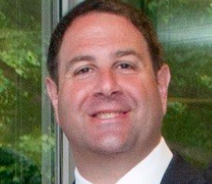U.S. Soccer Releases New In-Depth Player Safety Guidelines
A dynamic expert in injury prevention, rehabilitation, sports medicine and athletic conditioning, Gallucci is the Medical Coordinator for Major League Soccer (MLS), overseeing the medical care of 600 professional soccer players. Gallucci is the former Head Trainer of the New York Red Bulls MLS team and is a Sports Medicine consultant for professional athletes in the NHL, NFL, NBA, MLB, and USA Wrestling. Gallucci, Jr. is also President, JAG Physical Therapy & JAG Pediatric Therapy.
Here are Gallucci’s insights on the guidelines released by U.S. Soccer and the importance of concussion awareness.
As MLS Medical Coordinator for pro soccer players, Gallucci understands why these guidelines are so critical, especially for youth soccer players who want to become tomorrow’s professional players.
Building off of 2015’s Recognize to Recover program, US Soccer has released a new set of recommended guidelines for players and coaches.
Guidelines Recommended by U.S. Soccer and Implemented January 2015
- Improve concussion awareness and education among youth coaches, referees, parents, and player
- Instill uniform concussion management and return-to-play protocols for youth players
- Modify substitution rules to allow players who may have suffered a concussion during games to be evaluated without penalty
- Prohibit heading the ball for children 10 and under and limit the activity to a maximum of 30 minutes with no more than 15-20 headers per player, per week in practice only for ages 11 to 13
Headgear
Although there is a lot of marketing and media surrounding the use of headgear in soccer, the U.S. Soccer Federation’s health and safety program, “Recognize to Recover” which was introduced in January 2015 and has since been updated does not address or recommend the use of said headgear.
Rather, there is concern from members of U.S. Soccer’s Medical Committee in regards to the media hype surrounding headgear because there is currently no research to substantiate that these products are effective or that they are not harmful.
Without this knowledge, we are providing a product that is giving the player a false sense of security when it comes to concussion prevention that may not prevent these injuries from occurring and could potentially be making the situation worse.
A concussion is a traumatic brain injury that results from a jolt or a blow to the head or the body that produces a disruption in brain activity.
The brief disruption in brain activity results from the brain movement and impact with the interior wall of the skull secondary to the collision or blow to the head.
Related Article: US Soccer’s Recognize To Recover Program
Because the effects of a concussion are a result of the movement of the brain inside the skull, headgear across all sports, including football and hockey, has not been shown to prevent a concussion from happening.
With that being said, I feel that U.S Soccer’s focus on pulling away from high-risk behaviors, such as limiting excessive headers at the youth levels, is a much better way to prevent head injuries when compared with the idea of giving a player a piece of equipment that lacks medical research into its effectiveness.
Recommendations for members
- An adequate number of Health Care Professionals (HCP) present for all major youth tournaments and accessible as needed during play.
- HCP should be licensed, such as a Certified Athletic Trainer (ATC) or physician (MD,DO), with skill set in emergency care and sports medicine and knowledge related to concussion evaluation and management.
- Hosting entities should collaborate with HCP on the overall emergency action plan and discuss the management of injuries and return to play.
Regulations for Academy Level Teams
- Certified Athletic Trainer (ATC) on the field for the game to start.
- Modified substitution rules to allow players who may have suffered a concussion during games to be evaluated without penalty.
- Substitution for evaluation of concussion/head injury will not count against the team.
- The player may return to the field if evaluated and cleared by a health care professional who specializes in concussion management (i.e. certified athletic trainer).
- ATC is the ONLY one allowed to evaluate and return a player if a referee removes them for a suspected concussion.
In the future, U.S. soccer is looking to have ATCs at all soccer games.
Source: U.S. Soccer
Editor’s Note: We recognize that the subject of headgear is highly controversial and that there are people who believe that headgear protection may help minimize the risks of injury.







